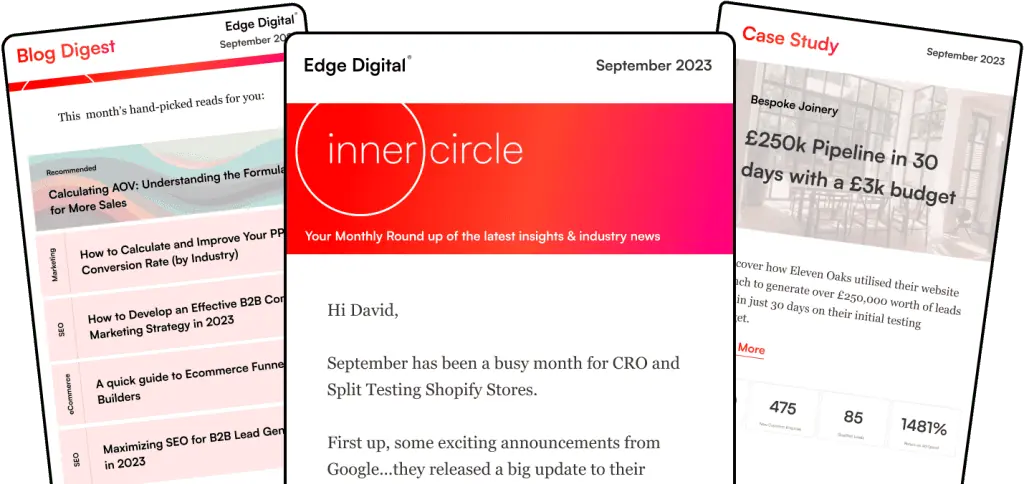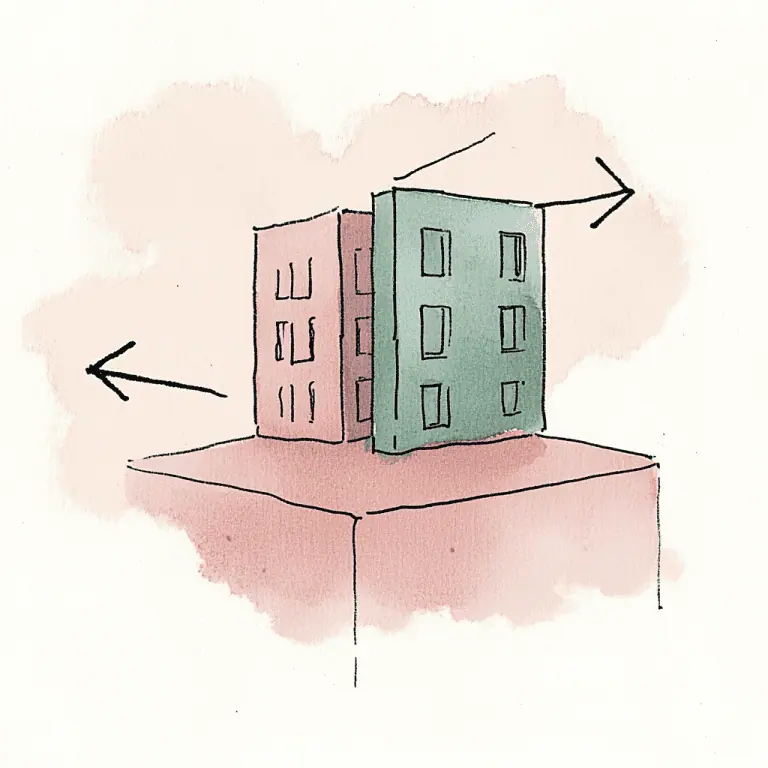Are you ready to revolutionize your website’s performance and user experience? Dive into the game-changing strategy of using facades to defer video loading. Facades serve as a decoration that enhances the visual appeal of your website. This isn’t just about speeding up your website; it’s about transforming how users interact with your content and reshaping your online presence in the eyes of both your audience and search engines. By enhancing the appearance of your website, facades can significantly improve its visual appeal, making it more attractive and engaging for visitors. In this exploration, we unveil the often overlooked yet powerful impact of this simple technique, revealing its profound effects on everything from user engagement to SEO rankings.
Key Takeaways:
Boost User Experience and Engagement: Discover how this innovative approach not only accelerates page loading times but also enhances overall user satisfaction, keeping your audience engaged and invested.
Skyrocket Your SEO Rankings: Learn how improving Core Web Vitals with video facades can dramatically boost your website’s visibility in search engine results, driving organic traffic and maximizing online exposure.
Drive Business Success: Uncover the direct link between technical website performance and commercial success, including increased conversion rates, reduced bounce rates, and cost-effective bandwidth management.
So what is a Facade & why should I care?

Facades are still images that look like videos.
Facades are like a front cover or a preview for something more substantial on a website, often used for media content like videos. Instead of loading the entire video when a page opens, a facade might show a static image or a lightweight preview. This image looks like the video and has a play button. When a visitor clicks on this facade, the actual video starts to load and play.
Facades can be made from various materials, including bricks, which play a significant role in building construction. In architecture, a façade is the front or exterior of a building, crucial for both design and energy efficiency. Bricks are known for their durability, insulation benefits, and aesthetic appeal, enhancing both the street appeal and overall design of a home.
Using facades can be a strategic move to enhance your website’s performance, user experience, and potentially, your search engine rankings. This can lead to a more successful online presence, attracting and retaining more customers.
The Business Case for Building Facades
Implementing a facade to defer the loading of embedded videos on websites has been a strategy employed by various businesses and organizations, often leading to notable impacts in terms of performance, user engagement, and cost-efficiency. For example, facades can be used to illustrate how specific features can be utilized in practical scenarios. Over time, facades have evolved significantly in the construction of buildings, reflecting advancements in both aesthetic and functional aspects. Here are a few examples and case studies:
Large News Websites
Scenario: Major news websites often embed multiple videos on their pages. These videos can significantly slow down page load times, especially for users on mobile devices or with slower internet connections.
Implementation: By implementing a facade, these websites replaced auto-loading videos with static thumbnails and a play button.
Impact: The change resulted in faster page load times, improved user experience, and increased page views. Additionally, they observed a reduction in bounce rates as users were more likely to stay on the site due to the improved loading speed.
E-commerce Platforms
Scenario: E-commerce sites frequently use product demonstration videos. However, auto-loading these videos can slow down product pages, which can be detrimental to the shopping experience.
Implementation: E-commerce platforms implemented video facades that load only upon user interaction.
Impact: This led to faster browsing experiences, encouraging users to explore more products. The reduced loading time also contributed to improved conversion rates and higher sales, as users were less likely to abandon slow-loading pages.
Online Learning Platforms
Scenario: Educational websites and online course platforms typically have numerous instructional videos. Loading these videos simultaneously can be resource-intensive.
Implementation: These platforms introduced a click-to-load feature for video content.
Impact: This method reduced the initial load on the server and improved the overall site performance, leading to a better learning experience. It also allowed users to control their data usage, which was particularly beneficial for those with limited bandwidth.
Blogging and Content Websites
Scenario: Blogs and content-centric websites often embed videos to enhance their articles but face the challenge of balancing multimedia content with page performance.
Implementation: They used video facades to defer the loading of embedded videos.
Impact: The sites witnessed an improvement in page load times, positively impacting SEO rankings. It also led to increased time spent on the site as readers were more likely to engage with content without facing performance issues.
Social Media Platforms
Scenario: Social media platforms with video content faced challenges in maintaining fast loading times while hosting a large volume of video content.
Implementation: Some platforms opted for a video loading facade, particularly for videos in feed or on user profiles.
Impact: This resulted in a more streamlined user experience, reduced data usage for users, and maintained high engagement levels, as users could choose which videos to load and watch.
Modern construction techniques have significantly improved the functionality and aesthetics of facades, making them more efficient and visually appealing.
These case studies demonstrate that using a facade to defer loading of videos can lead to positive outcomes like improved site performance, enhanced user experience, reduced bounce rates, better SEO rankings, and potentially higher engagement and conversion rates. The specific impact can vary depending on the nature of the website and its audience.
Facades & Core Web Vitals
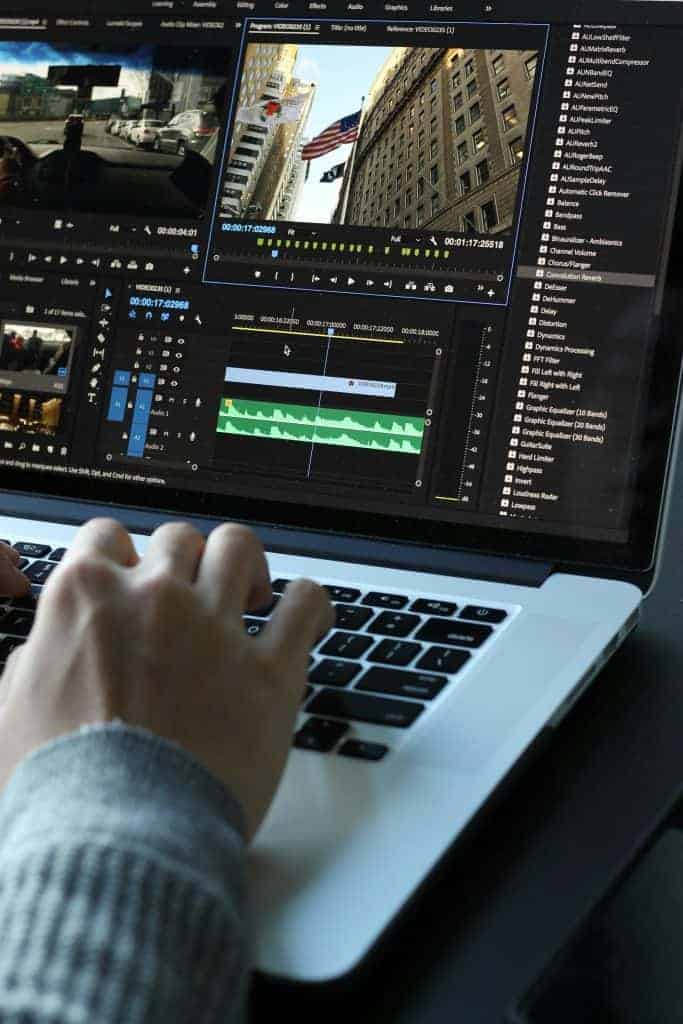
The implementation of facades for deferring video loading has significant implications for Core Web Vitals, which are a set of metrics defined by Google to measure the health and performance of a website from a user experience perspective. These vitals include Largest Contentful Paint (LCP), First Input Delay (FID), and Cumulative Layout Shift (CLS). The exterior design of a facade can influence these Core Web Vitals by optimizing the visual stability and load times of the outer elements. Additionally, the importance of fire resistance in building facade designs, particularly in high-rise structures, cannot be overstated. Ensuring that exterior walls meet specific fire-resistance ratings is crucial to prevent the spread of fire between closely situated buildings. Here’s an analysis of how using facades impacts these Core Web Vitals and, consequently, the business and commercial aspects of a website:
Largest Contentful Paint (LCP)
Impact: Facades can significantly improve LCP, which measures how quickly the main content of a page loads. Videos are often the largest elements on a page; deferring their load means the page can reach its LCP much faster.
Business Implications: A better LCP score leads to improved user satisfaction and potentially higher rankings in search engine results. This can increase organic traffic to the site, enhancing opportunities for revenue and conversions.
First Input Delay (FID)
Impact: FID measures the time from when a user first interacts with your page to the time when the browser is actually able to respond to that interaction. Facades reduce the initial load on the browser, which can improve FID as the browser is less bogged down processing heavy content like videos.
Business Implications: Improving FID enhances the user experience, particularly for interactive sites like e-commerce platforms, leading to increased user engagement and potentially higher sales or conversion rates.
Cumulative Layout Shift (CLS)
Impact: CLS measures the stability of a page as it loads. Without a facade, videos can cause significant layout shifts as they load and play, negatively impacting CLS. Facades can help stabilize the layout by loading a lightweight placeholder first.
Business Implications: A stable page layout provides a more comfortable browsing experience, reducing the likelihood of user frustration and page abandonment. This stability is crucial for maintaining user trust and engagement, directly impacting commercial success.
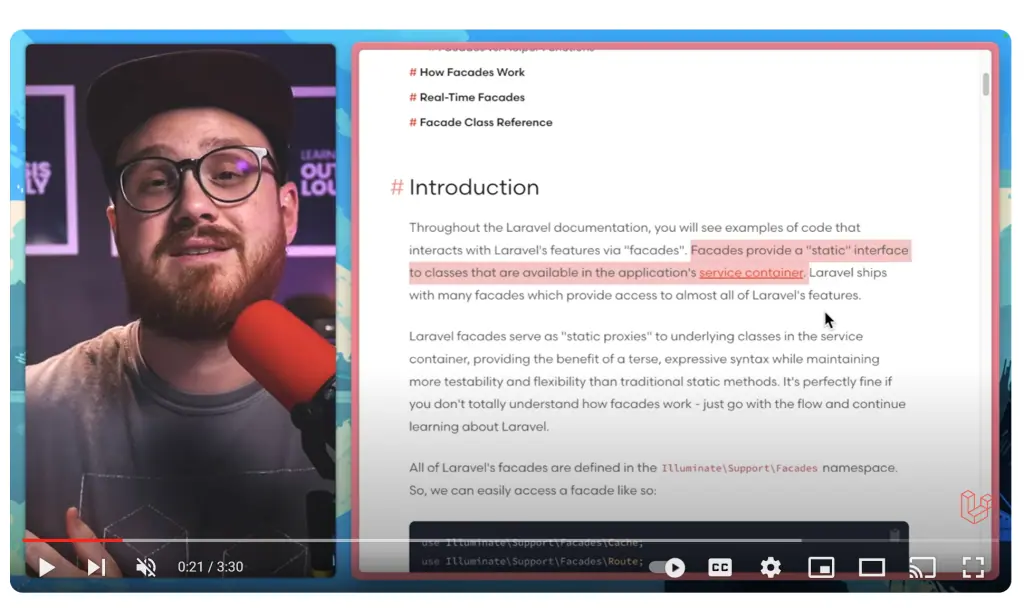
facades can also affect engagement, and cost-efficiency
The Commercial and Business Implications of improving Core Web Vitals
SEO and Visibility: Since Core Web Vitals are a ranking factor for Google, improving these metrics with video facades can generally lead to better search engine rankings. The choice of materials for facades can also affect Core Web Vitals by influencing load times and overall site performance, which in turn impacts business outcomes. This higher visibility can drive more traffic, increasing the potential for revenue and customer acquisition.
User Experience and Brand Perception: By improving page load times and interaction readiness, facades can enhance the overall user experience. A positive user experience is directly linked to improved brand perception and customer loyalty.
Conversion Rates: For e-commerce and business-oriented sites, improved Core Web Vitals can lead to higher conversion rates. Users are more likely to make purchases or engage with content on a site that performs well and offers a seamless experience.
Reduced Bounce Rates: Faster loading times and improved interaction readiness reduce the likelihood of users leaving the site quickly (bounce rate). Lower bounce rates are often correlated with higher user engagement and more opportunities for monetization.
Cost Efficiency: By reducing the initial load, businesses can save on bandwidth costs, especially if the videos are hosted on their own servers. This efficiency can be particularly significant for sites with high traffic volumes.
What are the Benefits of Using Facade Materials?
Using a facade to defer loading of embedded videos on your website can offer several significant benefits:
Improved Page Load Speed: Videos are typically large files. By deferring their loading, the initial page load can be much faster. This is particularly important for users with slower internet connections or those accessing your site on mobile devices.
Enhanced User Experience: A faster-loading page provides a better user experience. Users are less likely to leave your site due to frustration with loading times. A facade can display a lightweight preview image or a play button, giving users the choice to load the video. Additionally, decorative elements in facades can enhance user experience and engagement by creating visually appealing and engaging environments. Style and color play a large part in selecting the appropriate facade, emphasizing the importance of these factors in achieving aesthetic coherence.
Reduced Data Usage: Automatically loading videos can consume a lot of data. This can be a concern for users on limited data plans. By using a facade, you give users control over their data usage.
Increased Performance and Efficiency: Loading multiple videos can consume significant system resources, which can slow down the user’s device. By deferring video loading, you ensure that these resources are used only when necessary, maintaining the overall performance and efficiency of the user’s device.
SEO Benefits: Page load speed is a factor in search engine rankings. Faster-loading pages are often ranked higher, which can lead to increased visibility and traffic.
Control Over Third-Party Tracking: Embedded videos, especially from platforms like YouTube, can come with third-party tracking scripts. By using a facade, you can prevent these scripts from loading until the user decides to watch the video, giving users more privacy control.
Reduced Server Load: If videos are hosted on your server, deferring their loading can reduce the initial strain on your server, especially during peak traffic times.
In summary, the use of facades to defer video loading aligns closely with the objectives of Core Web Vitals, aiming to create a fast, responsive, and stable user experience. This alignment not only improves the technical performance of a website but also has profound business and commercial implications, from improved SEO and user engagement to increased conversion rates and brand loyalty.
Impact to Paid Search Advertising (PPC)
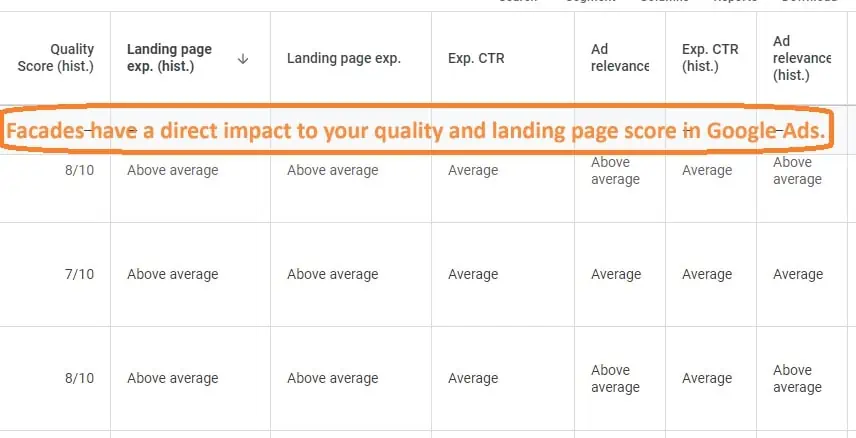
Using facades to defer the loading of embedded videos on your website can have a positive impact on your Pay-Per-Click (PPC) campaigns in several ways:
Improved Landing Page Experience: Facades contribute to faster page loading times. When users click on your PPC ads and are directed to your landing pages, they are more likely to have a positive experience due to quick loading. This can increase the likelihood of them staying on your page and taking the desired action, such as making a purchase or filling out a contact form. Additionally, the facade of a house can significantly influence user perception and engagement, making your landing page more appealing. Similarly, roofs play a crucial role in protecting structures from the elements and contribute to the overall design of buildings, enhancing their functionality and aesthetic appeal.
Lower Bounce Rates: Faster loading pages, thanks to video facades, can reduce bounce rates. When people click on your PPC ads and find that the landing page loads quickly, they are less likely to leave immediately. This can lead to more effective ad spend, as users are engaging more with your content.
Higher Quality Scores: Google Ads and other PPC platforms often use Quality Score as a metric to determine the cost and effectiveness of your paid advertising. Part of this score is based on the landing page experience. Faster, more user-friendly pages can lead to higher Quality Scores, which can reduce your cost-per-click and improve ad placement.
Increased Conversion Rates: A better user experience on your landing pages can lead to higher conversion rates. If users aren’t waiting for videos to load, they can quickly find the information they need and are more likely to convert, whether that’s through sales, sign-ups, or other actions relevant to your PPC goals.
Enhanced Mobile Experience: With more users accessing websites on mobile devices, a quick loading page is even more crucial. Video facades ensure that your landing pages load quickly on mobile, which is essential since mobile loading times are a significant factor in PPC performance and user engagement.
In essence, utilizing facades for video loading on your website can enhance the effectiveness of your PPC campaigns by improving user experience, lowering bounce rates, increasing Quality Scores, boosting conversion rates, and providing a better mobile experience. This leads to more efficient use of your advertising budget and improved campaign performance.
Facades & Loading Speed: Some commonly asked questions about Appearance
When it comes to using facades to defer loading of embedded videos on websites, several commonly asked questions arise, reflecting concerns about implementation, impact of facades, and best practices. Here are some of them:
How Does a Video Loading Facade Work? People often want to understand the technical mechanism behind a facade for video loading: how it replaces the video with a lightweight element and what happens when a user interacts with this facade.
Will Deferring Video Loading Affect User Engagement? There’s a concern about whether delaying video loading could lead to lower engagement rates, as users might not always choose to click and load the video.
Is Implementing a Video Loading Facade Complicated? Website owners and developers frequently ask about the complexity of implementing such a feature, especially in terms of coding requirements and compatibility with different web platforms and browsers.
How Does Video Facade Affect SEO? Given the importance of SEO, questions often revolve around how a loading facade might influence search engine rankings, particularly in relation to page load speed and user engagement metrics.
Can a Video Loading Facade Save Bandwidth? There’s interest in understanding how much bandwidth can be saved by deferring video loads, especially for sites with high traffic or those accessed primarily via mobile devices.
Does a Video Facade Impact Analytics? Questions arise about how a facade might affect the tracking of video views and user interaction data, which are crucial for content strategy and monetization.
What Are the Best Practices for Designing a Video Loading Facade? Users often seek advice on how to design a user-friendly and effective video loading facade, including what kind of preview or thumbnail to use, and whether to include play buttons or other interactive elements.
How Does Deferred Video Loading Impact Accessibility? Ensuring that websites are accessible to all users, including those with disabilities, is a key concern. Questions about how a video facade aligns with accessibility standards are common.
How Important is it to Maintain Facade Functionality and Safety? Maintaining facade functionality and safety is crucial to ensure that the facade performs its intended role without compromising user experience or site performance. Proper maintenance helps in upholding safety standards and optimizing the facade’s effectiveness.
